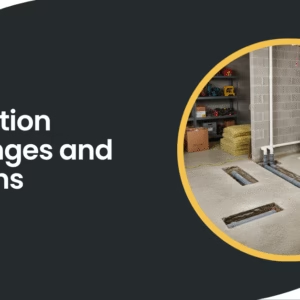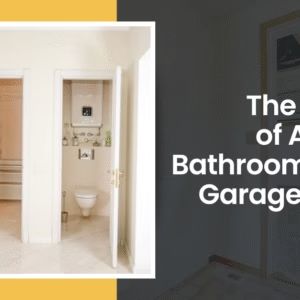Ever walked into your garage in the middle of January and felt like you’d just stepped into a meat locker? Or tried working on a project in July and nearly melted in your sweat? That’s the reality for a lot of homeowners. You dream of having a functional workshop or a climate-controlled garage, but the reality is you can’t even stand to be in it for more than ten minutes. It’s uncomfortable, inefficient, and let’s be honest, kind of a waste of space.
You’re not alone. John, a homeowner in rural Minnesota, called it his “garage of extremes.” In the winter, he couldn’t keep the tools from freezing. In the summer, his paint cans exploded—literally. After years of patchwork solutions and minimal comfort, he finally decided to insulate his shop space properly. Now? It’s not just usable year-round—it’s his favorite place to be.
Ready to fix the climate chaos in your garage? Good. Let’s break down exactly how to do it—step-by-step, no fluff, and no nonsense. Just real garage insulation tips you can trust.
Why Insulating Your Garage or Shop Matters
Think your garage doesn’t need insulation because you “don’t live in it”? Think again. An uninsulated garage affects more than just your tools—it messes with your home’s overall efficiency. It can impact indoor temps, your utility bills, and even your car’s longevity.
Let’s face it—if you’re using your garage for anything beyond parking (a workshop, home gym, studio, man cave, you name it), insulation isn’t a luxury—it’s a must. That’s where creating an insulated shop space becomes a game-changer.
You Deserve a Garage That Works With You—Not Against You
When you insulate your garage properly, it becomes usable space, no matter what season it is. That means
- You can work on your car without freezing your knuckles off.
- Your furnace doesn’t have to overcompensate every time the garage door opens.
- You can use the space for projects, workouts, storage, or even a mini guest suite.
Let’s dive into how to get it done right.
Step 1: Choose the Right Insulation for Your Walls
This is where most people go wrong. They slap up some cheap fiberglass, cover it with drywall, and call it a day. Six months later, they’re back to square one—freezing or sweating, depending on the month.
Here’s a better approach:
- Batt Insulation (fiberglass or mineral wool): Great for budget-conscious remodels, fits well between standard studs.
- Rigid Foam Boards: Offers high R-value and moisture resistance—ideal for detached garages or metal buildings.
- Spray Foam: Best for irregular shapes, cracks, or when you need a serious air seal. It’s more expensive but ultra-effective.
Whichever you choose, the goal is to seal and insulate—not just stuff the walls and hope for the best.
- Tip: Don’t skip the vapor barrier if you’re in a humid area. It’s crucial for preventing moisture buildup and mold, especially in an insulated shop space.
Step 2: Don’t Forget the Ceiling
If you’re only insulating your garage walls, you’re missing a huge opportunity. Heat rises. So if your ceiling isn’t insulated, it’s like heating your home with all the windows open.
For garages with attic space above, go for blown-in cellulose or fiberglass. It’s fast, affordable, and great at filling gaps. If the garage ceiling is exposed, batt insulation between joists works just fine.
And if you’re planning on installing a heater or AC unit later (we’ll talk about that), a properly insulated ceiling makes all the difference for climate control and garage comfort.
Step 3: Upgrade That Garage Door (It’s Half the Battle)
Let’s talk about the big metal elephant in the room—your garage door. Most standard doors are basically thin metal sheets with zero insulation. That’s a giant heat sink just waiting to destroy your efforts.
Here’s what you can do:
- Insulated Garage Doors: If you’ve got the budget, swap out your door for a fully insulated one. It’s one of the best upgrades you can make.
- Insulation Kits: For a DIY fix, add rigid foam panels to the inside of your existing door. It’s cost-effective and surprisingly efficient.
- Weatherstripping: Seal all edges of the garage door to prevent drafts and water leaks. A garage remodel isn’t complete without it.
You’ll be shocked at how much warmer (and quieter) your garage gets once you fix the door.
Step 4: Seal Every Crack, Gap, and Hole
This step is not optional.
Insulation is only half the equation—air sealing is the other. You could install the best insulation in the world, but if air is still leaking through outlets, corners, and sill plates, you’re just throwing money away.
Grab some cans of spray foam, caulk, and weatherstripping and hit these problem areas:
- Around windows and doors
- Where walls meet the foundation
- Gaps around plumbing, electrical, and vents
- Floor-to-wall connections
This is especially important if you’re adding heat or AC down the line. A properly sealed and insulated shop space is like a thermos—it stays exactly how you want it inside.
Step 5: Think About Heating
Let’s say you’ve insulated your garage and sealed all the leaks. That’s awesome—but now what? How do you actually keep it warm in winter and cool in summer?
Here are your best bets:
- Electric Garage Heaters: Wall-mounted, efficient, and great for smaller shops.
- Ductless Mini-Split Systems: Ideal if you want both heat and AC in one sleek unit.
- Gas or Propane Heaters: Powerful, but require ventilation and professional installation.
Furnace Installation Tips for the Ambitious

Thinking about extending your home’s furnace to your garage? That’s a big move—and it can work, but you need to do it safely. Get a licensed HVAC pro involved, and never install return ducts in the garage (the carbon monoxide risk is real).
And remember: an insulated shop space makes your heating system way more efficient. You won’t need as much power if your garage is sealed tight.
Step 6: Insulate the Floor? Maybe—Here’s When It Matters
Do you need to insulate the garage floor? Not always. But in some cases, it’s worth considering.
When It Makes Sense:
- You’re doing a full garage remodel and replacing flooring.
- You’re converting the garage into a living or sleeping space.
- You’re in an area with freezing winters and want radiant heat.
You can install rigid foam boards under subflooring or even add radiant heat systems. But honestly? For most standard garage users, a few thick rugs or rubber mats do the trick just fine.
Step 7: Finish With Drywall (or Alternatives)
Once your insulation is up, seal it all in with drywall—or go rogue with something easier.
- Drywall: Fire-resistant and clean, but more work.
- OSB or Plywood: Easier to hang shelves and tools. Great for workshops.
- PVC Panels: Moisture-resistant and wipe-clean, perfect for messy workspaces.
Your finishing material doesn’t affect insulation much, but it does affect how you’ll use the space. Think long-term here.
Want a Year-Round Climate-Controlled Garage?
With the right insulation, air sealing, and a little heat (or cool), you can turn a miserable garage into your dream shop. Whether you’re working on cars, building furniture, or just looking for extra space, these garage insulation tips aren’t just practical—they’re life-changing.
Remember John? He’s now got a fully insulated shop space where he spends hours every day—even in December. He even ran power out there, added a TV, and calls it his “man cave 2.0.” All it took was smart planning, the right materials, and some commitment.
You can do it too. And if you need help with garage remodel services, insulation upgrades, or even furnace installation tips, Legacy Home Solutions is just a call away.
Ready to finally make your garage work for you, not against you? Let’s make that space usable 12 months a year. Schedule your consultation with Legacy Home Solutions.
5 FAQs
1. Can I insulate a detached garage the same way as an attached one?
Yes, but detached garages need extra attention to moisture and ventilation since they don’t benefit from your home’s climate control.
2. Should I insulate if I’m not adding heat or AC?
Absolutely. Insulation still helps regulate temperature swings, protect stored items, and improve energy efficiency overall.
3. What R-value should I aim for in garage insulation?
Aim for R-13 to R-21 in walls and at least R-30 in ceilings for cold climates. R-values may vary by zone.
4. Is spray foam really worth the higher cost?
If you want maximum air sealing and insulation in tricky areas, yes. It’s pricey, but it offers unmatched performance.
5. Will insulating my garage increase my home’s value?
It can—especially if you convert it into a usable living or working space. It also improves energy efficiency, which buyers love.





